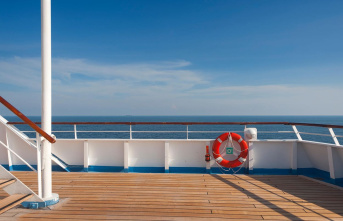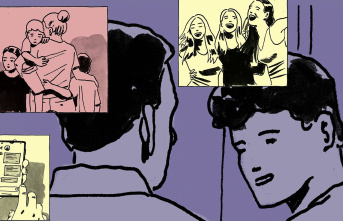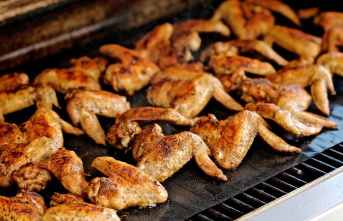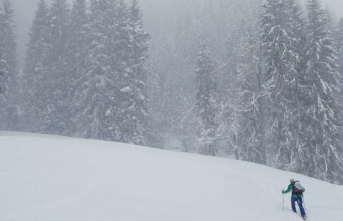Last spring, the danger of mountains that were still wintry showed itself drastically: in the few days around Easter alone, three hikers slipped on old snow in the Bavarian Alps and fell to their death - part of a veritable series of tragic mountain accidents.
Most accidents happen when hiking in summer, two thirds of all operations by the Bavarian Mountain Rescue Service involve hikers. Mountain rescue service, police and German Alpine Association (DAV) are now warning of particular dangers in the winter season. Because more and more people lace up their hiking boots even in the cold season. Mountaineering is trendy - and more often than not there is no snow for skiing.
"Winter in the mountains is not summer in white," warns mountain rescue service spokesman Roland Ampenberger. Path markings are quickly no longer recognizable in the snow. It's getting dark quickly. Add to that the cold, the risk of slipping on icy paths and the danger of avalanches. Four people died in avalanches in Bavaria last winter - two of them were hikers.
"In the mountains you quickly reach your limits when hiking in winter. If you are out and about without snowshoes or touring skis and the appropriate emergency equipment and experience, you should stay close to the valley and on cleared paths," warns DAV President Roland Stierle.
Hiking only with the appropriate equipment
In the summer, easy hikes could become demanding tours in the winter that require high-alpine equipment, says Maximilian Maier from the police headquarters in Upper Bavaria South. Ice axes, crampons or lugs - as a slimmed-down version - could well be necessary to avoid slipping in snowy and icy terrain. For many a simple summer tour, avalanche equipment is also advisable in winter: avalanche transceiver, avalanche shovel and probe.
Hikers in particular are often not prepared for such demands of the winter mountain world, either in terms of knowledge or equipment. In addition to ignorance, carelessness is often involved in accidents. Some are walking with light shoes, others simply follow an app or start despite unfavorable weather conditions.
In February, two hikers went to a hut near Oberstdorf in snow and wind and got lost. One froze to death, the other died in hospital. Around Easter, a couple from Saxony-Anhalt, walking in sneakers and with insufficient equipment, slipped to their deaths on a snowy section of the Zugspitz region. In June, more than 100 schoolchildren and teachers had to be rescued from mountain distress in Austria's Kleinwalsertal. The teachers had chosen a route on the Internet that turned out to be far too difficult.
Danger of death in the freezing cold
In September, a mountaineer from Lower Saxony got caught in a storm on the Hochkalter near Berchtesgaden. Below the 2607 meter high summit he slipped. He made dramatic emergency calls, in which he stated that he could hardly hold himself in a snowstorm and the freezing cold. Then the contact broke off. Rescue workers searched tirelessly - but there was no rescue for the young man in the ice and snow. His body was discovered four weeks later.
From May to the end of October, the Bavarian mountain rescue service counted fewer missions than in the previous year. According to Ampenberger, the number of people killed in the mountains during this period has also fallen - from 85 in the previous year to 57 now. One reason for the decline could have been the rainy autumn. It is possible that some have traveled to other regions again, while in 2021 many were vacationing in their own country due to the pandemic. This had led to a strong rush to the mountains - and also attracted many inexperienced people. Police spokesman Maier advised getting information from local mountain guides or tourism associations as to whether the goal could be reached as planned.
According to Ampenberger, quite a few operations now take place after 6 p.m. In the summer of 2021, the rescuers had to move out more than 300 times in the dark. It is precisely then that the availability of helicopters is severely restricted, making it more difficult to reach the scene of the accident. The increasing number of evening excursions into the mountains are also a thorn in the side of nature conservationists, as the game is disturbed.












